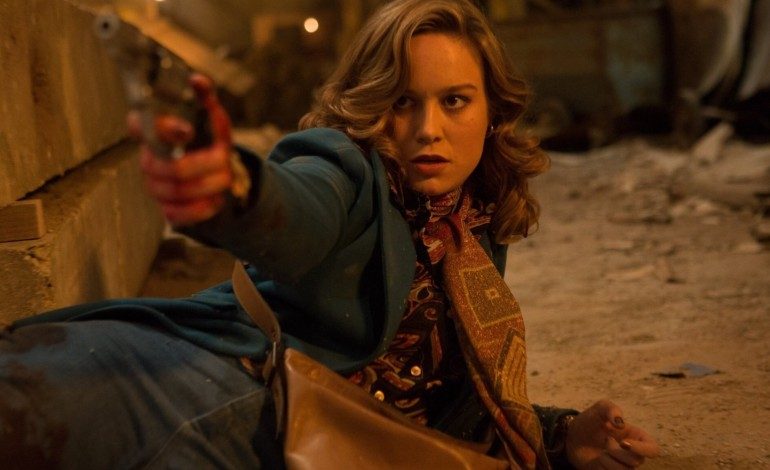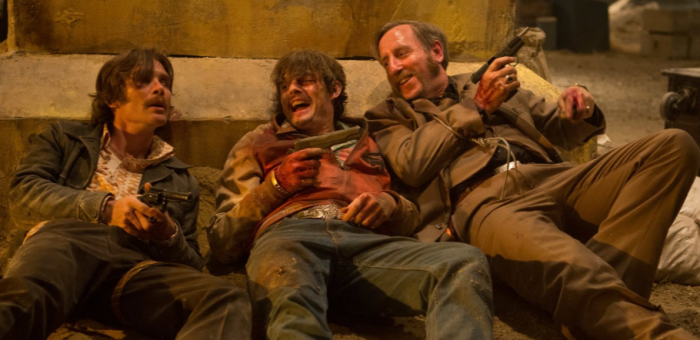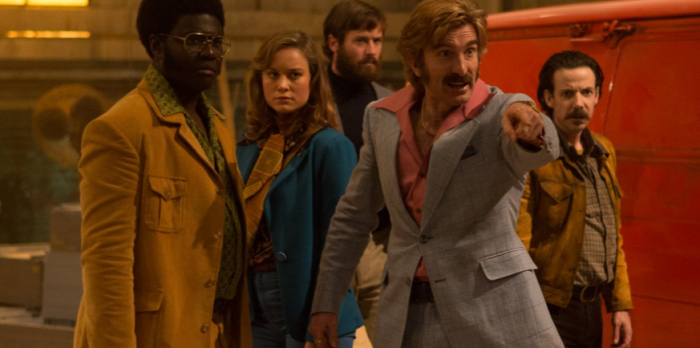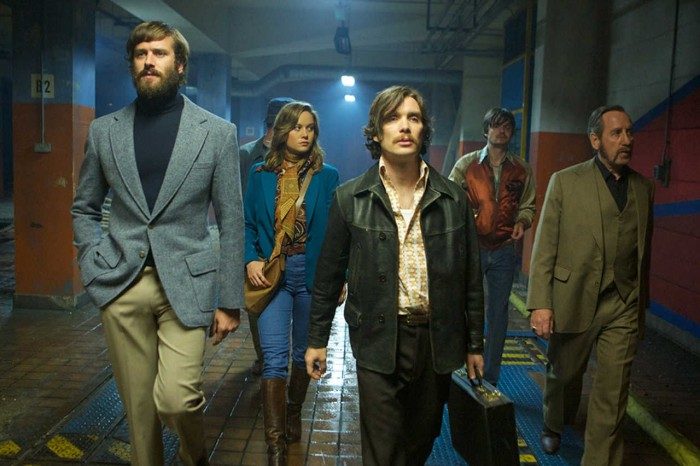

Genre films have a strange filmic milieu that they rest in. The minutiae of the film’s mise-en-scéne, semiotic language and narrative drive balances itself on a cinematic tightrope, threatening to plunge itself into either sordid barbarity or bland mediocrity. These are the inherent challenges when making a genre films—how does one balance absurdism with reality? Humor with violence? Diegesis with mimesis? Few genre films tactfully pull off this juggling act, leading to the pejorative appraisement that many individuals bestow upon them. But thankfully Ben Wheatley’s wondrous direction ensures that Free Fire rarely—if ever—plummets off of the razor thin tightrope.
Free Fire is a one-night tale that becomes increasingly more vicious, facetious, bizarre, enigmatic, but most importantly, fun as the film unfolds. A myriad of international individuals meet in a dilapidated Bostonian umbrella factory to do an arms deal. On the one side, there’s the buyers—Irish Republican Army soldiers Chris (Cillian Murphy) and Frank (Michael Smiley). They’ve brought along Frank’s buffoonish, woman-beating, drug-fueled Irish-American cousin Stevo (Sam Riley) and his equally amoral and moronic friend Bernie (Enzo Cilenti) as “muscle.”
On the other side, we have the sellers—international arms dealer and vanity-queen Vernon (Sharlto Copley), his protégé and confidante Martin (Babou Ceesay) and their incompetent lackeys Harry (Jack Reynor) and Gordon (Noah Taylor). Bringing the two groups together are the no-nonsense intermediaries Justine (Brie Larson) and Ord (Armie Hammer), both of whom exude a sense of professionalism that few others in the deal seem to have. Not long after everyone’s begrudging introductions, a personal rift between the lowest-rung members from the opposing sides leads to a catalytic escalation of violence. It doesn’t take long for tempers to rise and bullets (and one-liners) to fly.
Ben Wheatley seems to be undergoing an extensive cinematic exercise by exploring a myriad of genres, all of which are grounded in the polyester-lined, leisure suited 1970s. Both the dystopian drama High Rise and the comedy action flick Free Fire are a new trend for Wheatley, who seems to be relishing in the disaster and revenge pictures of the 1970s. From The Poseidon Adventure (1972) and The Towering Inferno (1974) to Three Days of the Condor (1975) and Assault on Precinct 13 (1976), Wheatley appears engrossed in the cult world of 1970s films—which has thankfully lent itself to the elatedly macabre Free Fire.
Five years and four movies later, it appears that the talented Ben Wheatley has returned to penning his own work along with frequent collaborator and wife Amy Jump. Not since Kill List (2011) has the English filmmaker directed his own screenplay, opting instead to rely on Jump’s writing for most of his films. And while this has yielded great features such as Sightseers (2012) and A Field in England (2013), Wheatley undoubtedly shines brightest when contributing to the writing. Whether it was his penchant for Mike Leigh-inspired (turned humorous) improvisations or his return to a more centralized approach to filmmaking, Wheatley’s Free Fire is perhaps one of his most well-intentioned and focalized film to date.
From the gorgeous tonal hues of gold, teal, mustard, pink and red to the simplistically beautiful choreography of the endless barrage of bullets, Free Fire works tirelessly to demonstrate its semiotic presence in the 1970s while relishing in the fidelity of its high-quality exploitation cinema. Part Tarantino, part Carpenter, part Steve McQueen, Wheatley’s newest film is a never-ending homage to the genre films of years past. Whether it is the playful relationship with guns or the continuous Mexican standoff moments, Free Fire savors its ridiculousness and expertly uses it as constant narrative momentum.
Couple that with the star-studded cast, Wheatley has constructed a bonafide genre film that explores its anachronistic place within filmic culture. The film’s moments of postmodern self-reflexivity are refreshing and appropriate. Whether it’s the film’s self-awareness of time or the characters’ infrequent recognition of the sequence’s absurdism, the audience is occasionally (and stirringly) pulled out of the film. This passive reexamination of the film—even if for a split second—ensures that the picture seldom takes itself seriously and acknowledges its fun-loving approach to violence, death, drugs, pain, and betrayal.
Furthermore, the film expert use of sound design all but ensures that the action seldom stops and that the humor is ever-flowing. With a host of great actors given free-rein to demonstrate their comedic chops, the film expertly incorporates and exploits sound design as a means of ensuring a well-functioning and hilarious diegetic world. The aural fixation ensures that the audience is aware of all the concurrent dialogues occurring in the main room. In a Robert Altman-esque incorporation of conversation, once one insult ends, another one begins, all of which is executed with surgical comedic precision and timing.
It is only once our numerous characters are non-fatally shot that the audience becomes privileged to singular conversations occurring in the different backrooms and hallways of the abandoned factory as they crawl around in what might be the slowest chase in cinema. And while the film incorporates its quick-witted dialogue to a gleefully sharp degree, it is perhaps John Denver’s continuous presence in the film’s diegetic world that is most effective in demonstrating Wheatley’s triumphantly macabre cinematic disposition. Denver’s “Annie’s Song” is frequently heard throughout the film, primarily through a car stereo that drives through the factory much in the same way a hearse might.
The melancholically beautiful song is ostensibly acting as a dirge. Like other ballad songs of the 1970s, it is both beautiful yet gloomy; It is with “Annie’s Song” that Wheatley points to the juxtaposing sensibilities of the film. It is both loving and ruthless; destructive and rejuvenating. It appears as though death has a macabre finality attached to it. In many ways, it seems that these characters just see it as a game.
Verdict: 5 out of 5
Free Fire is wondrous piece of genre work from Ben Wheatley, who seems to effortlessly exude the sensibilities and auras of 1970s culture and film. Free Fire is a joyous occasion that seldom becomes bloated, boring or unfocused during its relatively short 90-minute running time. And while the gun play may seem like a narrative crutch at times, it rarely—if ever—takes away from the film’s overt purpose of asking, “you like cake? How much cake can you eat? OK, have all the cake. And then look, here’s some more.” It seems that Wheatley is on the verge of returning to his once-heralded place as England’s next best director. And while it may be too early to tell whether Wheatley will continue to pen the scripts to his works, I wholeheartedly hope that he does for that is where this director excels best.



